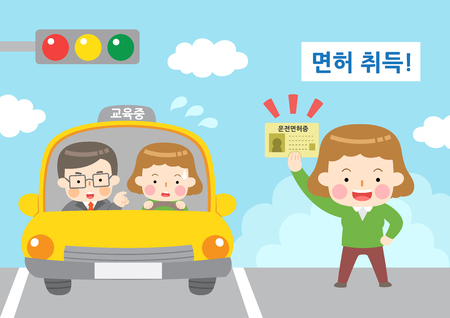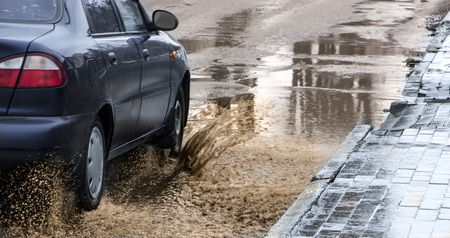1. What to Do If the Other Driver Is Uninsured or Underinsured
1. Stay Calm and Ensure Safety
Getting into an accident can be stressful, especially if the other driver is uninsured or underinsured. The first thing you should do is stay calm and focus on safety.
Check for Injuries
Before anything else, check yourself and others for injuries. If anyone is hurt, call 911 immediately. Even minor injuries should be looked at by medical professionals to ensure there are no hidden complications.
Move to a Safe Location
If it’s safe to do so, move your vehicle to the side of the road to avoid blocking traffic. Turn on your hazard lights to alert other drivers and prevent further accidents.
Contact Emergency Services
Regardless of whether injuries are present, it’s always a good idea to call the police. A police report can be helpful when filing an insurance claim, especially in cases involving uninsured or underinsured drivers.
2. Call the Police
After an accident involving an uninsured or underinsured driver, one of the first steps you should take is to call the police. Having law enforcement on the scene helps document what happened and ensures key details are recorded.
Why You Need a Police Report
A police report is an official record of the accident. It provides important details that can help with insurance claims and legal matters. Without this document, proving what happened can be much more difficult.
What to Tell the Police
When the police arrive, share accurate and clear information about the accident. Be sure to provide:
- Your contact and insurance details
- The other driver’s contact information (if available)
- A description of the accident
- Any damages or injuries sustained
What Will Be Included in the Police Report?
The police report will typically contain the following:
| Information | Description |
|---|---|
| Date, Time, and Location | Records when and where the accident occurred |
| Driver and Witness Statements | Includes accounts from you, the other driver, and any bystanders |
| Officer’s Assessment | The responding officer’s observations and conclusions |
| Any Citations Issued | Notes if any traffic laws were violated |
How the Police Report Helps with Claims
Having an official police report can support your case when filing an insurance claim. It provides an unbiased third-party record that insurers and legal professionals can reference, which is especially important if the other driver is uninsured or underinsured.

3. Gather Information
After an accident with an uninsured or underinsured driver, gathering information is crucial. Proper documentation can help when filing a claim with your insurance company or if legal action is needed.
Collect the Other Driver’s Details
Even if the other driver lacks sufficient insurance, you still need their information. Make sure to collect the following details:
| Detail | What to Collect |
|---|---|
| Full Name | Ask for their legal name as shown on their driver’s license. |
| Contact Information | Get their phone number and address if possible. |
| Vehicle Description | Note the make, model, year, and color of the car. |
| License Plate Number | Write down the number or take a photo of it. |
Take Photos of the Scene
Pictures serve as strong evidence of what happened. Use your phone to capture:
- The other driver’s car, including any visible damages.
- Your vehicle’s damage from multiple angles.
- The overall accident scene, including traffic signs, signals, or skid marks.
- Any visible injuries you or your passengers may have sustained.
Get Witness Information
If there were any witnesses, ask for their names and contact details. They can provide statements that help clarify what happened.
Keep Your Own Notes
Right after the accident, write down your own detailed account while it’s fresh in your memory. Include:
- The date, time, and location of the accident.
- The weather and road conditions.
- What happened before, during, and after the crash.
Keeping complete records will help when dealing with insurance companies or legal matters.
4. Notify Your Insurance Company
Inform your insurer about the accident and confirm whether youre covered under uninsured/underinsured motorist protection.
Contact Your Insurance Provider
As soon as possible, call your insurance company and report the accident. Provide all the details, including the location, time, and any relevant police reports. If the other driver is uninsured or underinsured, your insurer needs to know to help you determine the next steps.
Check Your Coverage
Ask your insurance representative whether you have uninsured motorist (UM) or underinsured motorist (UIM) coverage. This type of coverage can help pay for damages if the at-fault driver doesn’t have enough insurance.
Common Types of UM/UIM Coverage
| Coverage Type | What It Covers |
|---|---|
| Uninsured Motorist (UM) Bodily Injury | Medical expenses, lost wages, and other costs due to an uninsured driver |
| Uninsured Motorist (UM) Property Damage | Repairs to your vehicle if an uninsured driver damages it |
| Underinsured Motorist (UIM) Bodily Injury | Additional medical coverage when the at-fault driver’s insurance is insufficient |
Follow Your Insurer’s Instructions
Your insurance provider may require documentation, such as accident reports, photos, and witness statements. Be sure to follow their instructions and submit everything they need to process your claim.
5. Understand Your Coverage Options
If you’ve been in an accident with an uninsured or underinsured driver, it’s crucial to understand what your own insurance policy covers. Your auto insurance may have specific provisions that can help cover damages and expenses.
Review Your Policy for Coverage
Start by checking your insurance policy to see if you have Uninsured Motorist (UM) or Underinsured Motorist (UIM) coverage. This type of coverage helps pay for damages if the at-fault driver doesn’t have enough insurance. You should also look into collision coverage, which can help cover repair costs regardless of who was at fault.
Types of Insurance That May Help
Here’s a quick breakdown of coverage options that might apply:
| Coverage Type | What It Covers |
|---|---|
| Uninsured Motorist (UM) Coverage | Pays for injuries and damages if the other driver has no insurance. |
| Underinsured Motorist (UIM) Coverage | Covers expenses when the at-fault drivers insurance is not enough. |
| Collision Coverage | Pays for repairs to your vehicle regardless of fault. |
| Medical Payments Coverage | Helps cover medical expenses for you and your passengers. |
Check Deductibles and Limits
Even if you have the right coverage, be sure to check the deductibles and policy limits. Some insurance policies may only cover damages up to a certain amount, so it’s important to know what financial responsibility you might have.
Contact Your Insurance Provider
After reviewing your policy, reach out to your insurance provider to confirm your coverage and start the claims process if necessary. They can guide you on what steps to take next and how compensation will work.
6. Consider Legal Assistance
If the other driver is at fault and lacks sufficient insurance, consult a legal professional to explore your legal options for recovering damages. An attorney can help determine the best course of action based on your states laws and the available evidence.
Why Legal Assistance Is Important
Uninsured and underinsured motorist situations can be complicated. A legal professional can help you understand your rights, gather necessary documentation, and negotiate with insurance companies to ensure you receive the compensation you deserve.
Possible Legal Options
| Legal Option | Description |
|---|---|
| Uninsured Motorist Claim | If you have uninsured motorist (UM) coverage, you can file a claim with your insurance company to cover damages. |
| Underinsured Motorist Claim | If the at-fault driver’s insurance is insufficient, your underinsured motorist (UIM) coverage can help cover the difference. |
| Filing a Lawsuit | If the other driver lacks sufficient coverage, you may have the option to sue them personally for damages. |
| Negotiating a Settlement | A lawyer can negotiate directly with the at-fault driver or their insurer to secure a fair settlement. |
How a Lawyer Can Help
Assess Your Case
An attorney will review police reports, medical records, and other evidence to determine the strength of your case.
Handle Insurance Communication
Insurance companies may try to minimize payouts. A lawyer can negotiate with them to secure fair compensation.
Represent You in Court
If a lawsuit is necessary, a lawyer will represent you in legal proceedings to seek compensation for damages.
Next Steps
If you believe legal action is necessary, consult with an attorney as soon as possible to discuss your situation and explore your best options.
